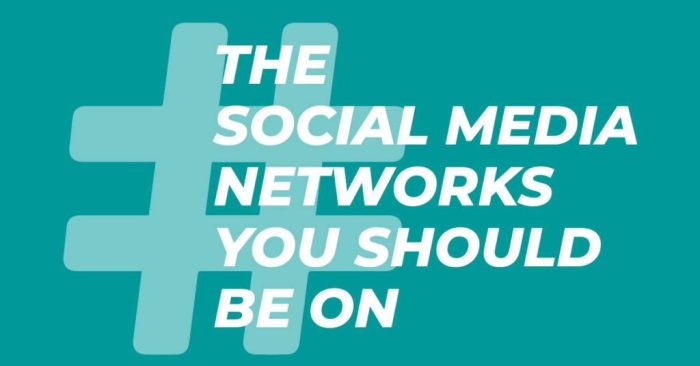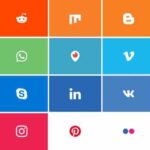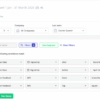The big social media platforms and their strengths—Facebook, Instagram, Twitter, TikTok, and YouTube—have fundamentally reshaped how we connect, consume information, and even conduct business. This exploration dives deep into the evolution of these platforms, examining their unique strengths, user experiences, content strategies, monetization models, and their profound impact on society.
From the early days of Facebook as a college network to the rise of short-form video on TikTok, each platform has carved its niche. This analysis delves into the specifics, exploring how their features, design, and strategies contribute to their respective strengths.
Introduction to Social Media Platforms
Social media has fundamentally reshaped how we communicate, connect, and consume information. From instant messaging to global news dissemination, these platforms have become indispensable tools for individuals and organizations alike. This exploration delves into the evolution and functionalities of prominent social media platforms, providing a comprehensive overview of their impact and influence.Understanding the history, features, and user demographics of these platforms is crucial for grasping their current and potential future roles in society.
The following sections will examine the key aspects of Facebook, Instagram, Twitter, TikTok, and YouTube, highlighting their individual strengths and differences.
Major Social Media Platforms: An Overview
The landscape of social media is vast and dynamic, with various platforms catering to distinct needs and interests. Each platform emerged from specific historical contexts, fostering unique communities and functionalities.
- Facebook: Launched in 2004, Facebook initially served as a platform for college students to connect. Its evolution from a campus network to a global social networking giant has been remarkable. The core functionality revolves around user profiles, friend connections, status updates, and group formations. Facebook’s strength lies in its comprehensive networking capabilities, enabling users to connect with a broad range of people and stay updated on their activities.
- Instagram: Emerging in 2010, Instagram focused on visual storytelling. Its core features include photo and video sharing, filters, and direct messaging. The platform has become a powerful tool for visual communication and has cultivated a strong community centered around aesthetics and visual trends. Instagram’s popularity stems from its ease of use and visually engaging nature.
- Twitter: Launched in 2006, Twitter prioritized real-time information sharing and concise communication. The core functionality centers around microblogging, with users posting short messages (tweets) that are publicly accessible. Twitter’s strength lies in its ability to facilitate rapid information dissemination and real-time conversations, making it a vital platform for news, updates, and discussions.
- TikTok: Emerging in 2016, TikTok prioritizes short-form video content. The platform’s core features include video creation, editing tools, and a strong emphasis on trends and challenges. TikTok’s growth has been fueled by its user-friendly interface and the engaging nature of short-form video content. The platform fosters a dynamic and evolving community, where trends and challenges frequently emerge and evolve.
- YouTube: Launched in 2005, YouTube initially focused on video sharing. Its evolution has extended to include live streaming, music videos, and educational content. The core features encompass video uploads, comments, and subscriptions. YouTube’s broad appeal stems from its vast library of videos, covering diverse topics and interests. The platform’s user-friendliness and vast content library have made it a leading destination for video content.
User Demographics Comparison
Understanding the demographics of users on various platforms is essential to grasp the reach and target audience of each platform. This comparative analysis provides insight into user distributions across different age groups, genders, and geographic locations.
| Platform | Primary Age Group | Gender Distribution | Geographic Distribution |
|---|---|---|---|
| 35-54 | Slightly more female | Globally distributed, with higher concentration in developed nations | |
| 18-34 | Slightly more female | Globally distributed, with higher concentration in developed nations | |
| 25-44 | Slightly more male | Globally distributed, with higher concentration in developed nations | |
| TikTok | 16-24 | Slightly more female | Globally distributed, with higher concentration in emerging nations |
| YouTube | 25-54 | More male than female, though varying by video category | Globally distributed, with higher concentration in developed nations |
Strengths of Individual Platforms
Social media platforms have carved out distinct niches, catering to diverse user needs and preferences. Understanding these strengths is crucial for anyone looking to leverage these tools for personal or professional gain. From fostering communities to driving viral trends, each platform excels in specific areas.
Facebook’s Strengths in User Engagement and Community Building, The big social media platforms and their strengths
Facebook’s strength lies in its ability to connect people across geographical boundaries and foster strong communities. Its comprehensive suite of features, including groups, events, and pages, allows users to participate in discussions, share information, and build relationships. This rich network of connections creates a powerful platform for social interaction, news dissemination, and community organizing. For example, local groups can bring together neighbors for events, support groups can offer emotional and practical assistance, and activist groups can mobilize collective action.
The vast user base also makes it a potent tool for marketing and brand building, allowing businesses to reach a large and engaged audience.
Instagram’s Strengths in Visual Content and Influencer Marketing
Instagram excels in visual communication, capitalizing on the power of images and videos. Its focus on aesthetics and storytelling allows for a unique and engaging user experience. This visual focus makes it a highly effective platform for influencer marketing, enabling brands to partner with influential creators to promote their products and services to a large and highly receptive audience.
The platform’s built-in shopping features further facilitate direct engagement and commerce. Visual content is often highly impactful and easily shared, making it ideal for brands aiming to connect with customers on an emotional level.
Twitter’s Strengths in Real-time News and Information Dissemination
Twitter’s strength is undeniable in real-time information sharing. Its character limit encourages concise and impactful communication, making it an ideal platform for breaking news, public discourse, and immediate updates. The platform’s immediacy and global reach have transformed the way news is consumed and disseminated. This fast-paced nature makes it a crucial tool for journalists, political figures, and anyone seeking up-to-the-minute information.
Its trending topics feature further amplifies important conversations and issues, ensuring they reach a broader audience.
TikTok’s Strengths in Short-Form Video Content and Viral Trends
TikTok’s unique strength lies in its short-form video format and its ability to generate viral trends. The platform’s algorithm prioritizes engaging content, fostering a rapid and widespread dissemination of new ideas, creative expressions, and viral challenges. This fosters a sense of community and rapid spread of entertainment. The platform’s algorithm also enables creators to reach a large audience organically, making it an attractive option for content creators seeking widespread visibility and engagement.
TikTok has revolutionized the entertainment landscape by empowering creators to share their unique perspectives and talents.
YouTube’s Strengths in Video Content and Creator Monetization
YouTube stands out as a platform for long-form video content and creator monetization. Its vast library of videos encompasses a wide range of topics, from educational tutorials to entertainment content. The platform’s creator monetization tools provide a pathway for content creators to earn income from their work, fostering a vibrant and engaged creator community. This enables creators to generate revenue and build sustainable careers around their passions.
The platform also allows for advanced video editing and content creation tools, offering significant flexibility to creators.
Comparative Strengths of Platforms
| Platform | User Experience | Content Sharing | Advertising | Community Building |
|---|---|---|---|---|
| Intuitive and comprehensive; vast network | Wide variety of formats; strong community features | Targeted advertising; large reach | Strong community focus; groups, events, pages | |
| Visually driven; focus on aesthetics | High-quality visuals; Stories, Reels | Influencer marketing; visual ads | Community engagement through hashtags, tags | |
| Fast-paced; real-time updates | Short-form text; quick sharing | Targeted advertising; trending topics | Real-time discussions; news dissemination | |
| TikTok | Engaging short-form videos; viral trends | Short-form videos; trending challenges | Brand integration; creator partnerships | Viral trends; quick-paced engagement |
| YouTube | Vast library of videos; variety of formats | Long-form videos; tutorials, entertainment | Ad revenue; creator monetization | Creator community; varied content |
User Experience and Interface Design: The Big Social Media Platforms And Their Strengths
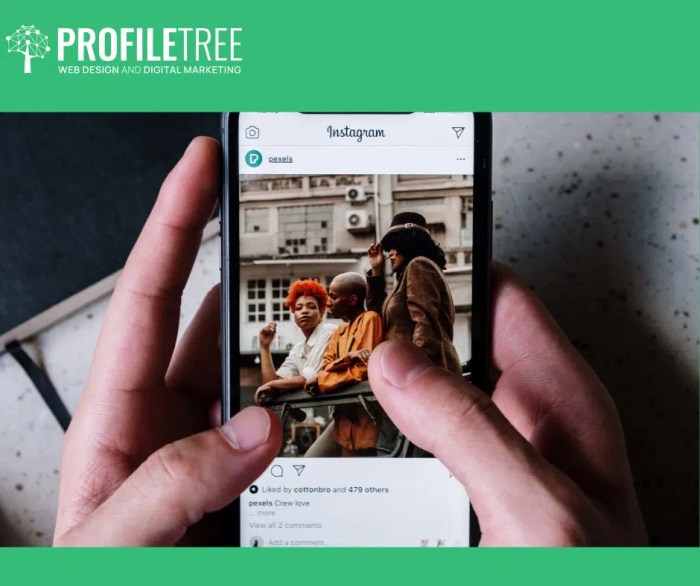
Social media platforms are more than just tools for communication; they’re designed experiences that shape how we interact with each other and the digital world. A well-designed interface is crucial for user engagement, fostering a positive and intuitive experience that encourages repeated use. Understanding how different platforms approach interface design reveals insights into their unique strategies and target audiences.The visual appeal, navigation, and functionality of a social media platform significantly influence how users interact with it.
A seamless user experience fosters user loyalty and encourages continued use. Different platforms cater to diverse needs and preferences, reflected in their unique design choices.
Big social media platforms like Instagram and TikTok offer fantastic visual storytelling opportunities, while LinkedIn excels at professional networking. However, standing out in a crowded digital marketplace, especially for professional services firms, requires more than just a strong social media presence. You need a distinct brand identity – a unique selling proposition, if you will – to truly connect with your target audience.
This is crucial for success, as detailed in this insightful article on brand differentiation essential for professional services firms to succeed. Ultimately, understanding your brand and leveraging the right platforms for your niche is key to maximizing your reach and building a loyal client base.
Influence of Interface Design on User Engagement
The design of a social media platform significantly impacts user engagement. Intuitive navigation, visually appealing layouts, and easily accessible features encourage users to spend more time on the platform. Platforms that prioritize simplicity and efficiency typically see higher user engagement rates. For example, Instagram’s focus on visually appealing content and a straightforward feed structure contributes to its high engagement.
Comparison of User Experience Across Platforms
Different social media platforms offer distinct user experiences. Facebook, with its vast network and diverse content formats, prioritizes a wide range of interaction options. In contrast, Twitter’s concise format emphasizes rapid communication and news dissemination. Instagram, heavily focused on visual content, fosters a different type of engagement centered on aesthetic sharing. Each platform’s interface reflects its core purpose and target audience.
Features Contributing to Positive User Experience
Various features contribute to a positive user experience on each platform. Intuitive search functionality, clear content organization, and customizable profiles are key elements. The availability of features like direct messaging, group chats, and sharing tools significantly impacts user engagement. Personalized recommendations and algorithms tailored to individual user interests can also enhance the user experience. Platforms with robust security features, ensuring privacy and safety, contribute to user trust and satisfaction.
Big social media platforms like Facebook and Instagram are undeniably powerful for reaching broad audiences, but they often come with limitations. Building a dedicated email list is crucial for direct communication and fostering stronger relationships with your audience. Learning how to maintain a mailing list, like strategies outlined in this helpful guide how to maintain a mailing list , can give you a powerful alternative to relying solely on platform algorithms.
This direct connection can translate into a more engaged and loyal following, even surpassing the reach of some of these platforms’ organic capabilities.
Platform Adaptation to Different Devices and Screen Sizes
Modern social media platforms prioritize responsiveness across various devices and screen sizes. A mobile-first approach ensures users can seamlessly access and interact with the platform on smartphones, tablets, and desktop computers. Adaptive layouts, responsive design elements, and optimized content delivery ensure a consistent experience regardless of the device.
Big social media platforms like Facebook and Instagram excel at visual storytelling and reaching massive audiences. However, crafting compelling content for these platforms often requires a different approach than writing for email social media. Mastering the art of concise, engaging copy for email campaigns is crucial for maximizing engagement and conversions, which can translate to stronger results on the big social media platforms overall.
Understanding these nuances is key to leveraging the strengths of each platform effectively. For more on writing for email social media, check out this helpful resource: writing for email social media.
Key Design Elements and Impact on User Experience
| Platform | Key Design Elements | Impact on User Experience |
|---|---|---|
| Newsfeed, Groups, Events, Marketplace | Broad range of interactions, diverse content types, community building. | |
| Timeline, Direct Messages, Trending Topics | Fast-paced communication, real-time updates, concise content. | |
| Feed, Stories, Reels, Direct Messages | Visual-centric engagement, creative content sharing, interactive features. | |
| TikTok | For You Page, Trending Videos, Duets, Challenges | Short-form video consumption, viral trends, user-generated content. |
Content Creation and Consumption
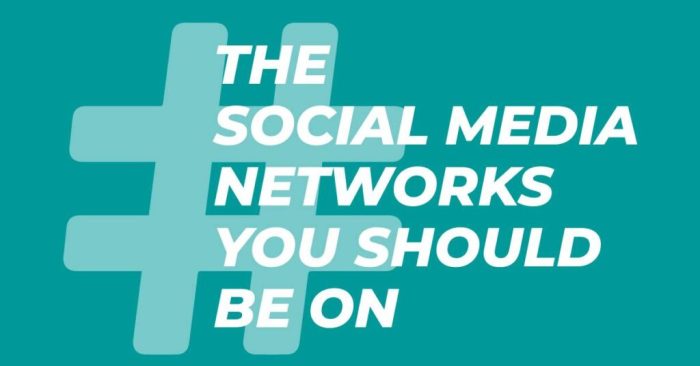
Social media platforms have fundamentally reshaped how we create and consume information. Understanding the nuances of content creation and consumption on each platform is crucial for maximizing impact and engagement. From the visual storytelling of Instagram to the concise updates of Twitter, each platform caters to a specific style and format. This section delves into the diverse landscape of content formats, creation tools, and consumption patterns on popular social media platforms.
Types of Content Prevalent on Each Platform
Different social media platforms are designed to support various content types. Instagram, for instance, is known for its visually-driven content, emphasizing high-quality photos and videos. Twitter, on the other hand, excels in short-form text updates, news, and real-time discussions. Facebook is a versatile platform, accommodating a wide range of content from text posts and images to videos and live streams.
TikTok is renowned for its short-form, engaging video content.
Tools and Features for Content Creation
Each platform offers a range of tools to aid in content creation. Instagram’s editing suite allows users to enhance photos and videos with filters and effects. Twitter’s character limits encourage concise and impactful messaging. Facebook’s platform provides tools for creating and managing pages, groups, and events. TikTok’s intuitive interface enables users to easily create and edit short-form videos.
Comparison of Content Consumption Methods
Users interact with content in different ways across various platforms. On Instagram, users often engage with visually appealing content through likes, comments, and shares. Twitter facilitates real-time discussions and interactions through replies and retweets. Facebook promotes broader community engagement through comments, shares, and group discussions. TikTok encourages user participation through challenges, trends, and reactions.
Content Performance on Different Platforms
Content performance varies across platforms. Visually compelling content tends to perform well on Instagram, while concise, timely updates are effective on Twitter. Engaging, interactive content, such as live streams or polls, often performs well on Facebook. Creative, trending videos are key to success on TikTok.
Best Practices for Content Creation on Each Platform
To maximize engagement, users should tailor their content to the platform’s specific strengths. For Instagram, high-quality images and videos with compelling captions are crucial. On Twitter, concise and impactful messages with relevant hashtags are effective. Facebook users can leverage interactive content like polls and quizzes to drive engagement. TikTok creators need to focus on trends and challenges to increase visibility.
Content Formats Supported by Each Platform
| Platform | Content Formats | Strengths |
|---|---|---|
| Photos, videos, Stories, Reels | Visual storytelling, high engagement with visuals | |
| Text updates, links, images, videos | Real-time updates, quick sharing of information | |
| Text posts, images, videos, live videos, events, groups | Broader reach, community engagement, diverse content types | |
| TikTok | Short-form videos, trending challenges | Viral potential, short-form entertainment, trends |
Monetization Strategies and Advertising
Social media platforms have evolved into powerful engines of commerce, and their monetization strategies are intricately tied to the user experience. Understanding how these platforms generate revenue is crucial to grasping the dynamics of the digital advertising landscape. Different models cater to various user behaviors and platform characteristics, leading to a diverse range of advertising options.These platforms leverage user data and engagement patterns to tailor advertisements, impacting the effectiveness and reach of campaigns.
The success of advertising strategies often depends on the platform’s specific strengths and the audience it attracts. Comparing monetization approaches highlights the unique opportunities and challenges faced by each platform.
Revenue Generation Methods
Platforms like Facebook, Instagram, and Twitter rely heavily on advertising revenue, often supplemented by subscriptions or in-app purchases. YouTube’s model centers on ad revenue from videos, with premium options for creators. TikTok’s revenue model is primarily driven by advertisements displayed within the platform. These different approaches reflect the diverse ways in which platforms engage with their user base and generate income.
Advertising Models
Social media platforms employ various advertising models, each tailored to specific campaign goals. Display ads, often static or animated images, are ubiquitous across many platforms. Social media ads, on the other hand, integrate seamlessly with the platform’s feed, targeting specific demographics or interests. Video ads, particularly prevalent on YouTube and TikTok, leverage the visual aspect to captivate audiences.
Platform-specific features like sponsored posts on Instagram and promoted tweets on Twitter offer targeted advertising options.
Effectiveness of Advertising Strategies
The effectiveness of advertising strategies on different platforms varies significantly. Factors like platform audience demographics, ad targeting capabilities, and user engagement play critical roles. For instance, Instagram’s visually-driven nature often makes image-heavy campaigns highly effective. On the other hand, YouTube’s video-centric format allows for highly targeted video advertisements, particularly effective for brands seeking to engage audiences visually.
The success of an advertising campaign often hinges on the platform’s ability to connect advertisers with the right audience and deliver measurable results.
Comparison of Monetization Strategies
A comparison of monetization strategies reveals distinct approaches. Facebook and Instagram, with their massive user bases, leverage detailed user data to deliver highly targeted ads, often resulting in high return on investment. Twitter, with its focus on real-time conversations, relies on promoted tweets to engage users actively participating in trending discussions. YouTube, focusing on video content, offers a diversified range of ad formats and creator monetization options.
TikTok’s short-form video format has led to a surge in user engagement, enabling a highly effective, targeted advertising approach.
Examples of Successful Advertising Campaigns
Numerous successful advertising campaigns have utilized social media platforms effectively. For instance, a campaign on Instagram using targeted ads focusing on influencer collaborations often yields high engagement and conversion rates. Similarly, a campaign on YouTube employing video ads tailored to specific demographics can significantly increase brand visibility. Successful campaigns often involve a deep understanding of the platform’s user base and its unique characteristics.
Advertising Options and Pricing Models
| Platform | Advertising Options | Pricing Models |
|---|---|---|
| Facebook/Instagram | Targeted ads, boosted posts, carousel ads, video ads | Cost per click (CPC), cost per mille (CPM), cost per action (CPA) |
| Promoted tweets, trends, video ads | CPC, CPM, CPA | |
| YouTube | Pre-roll ads, mid-roll ads, overlay ads, bumper ads | CPM, CPC, CPA |
| TikTok | In-feed ads, brand challenges, branded effects | CPM, CPC, CPA |
Community and Engagement Features
Social media platforms are built on the foundation of community. The ability to connect with others, share experiences, and build relationships is central to their appeal. This section delves into the various community features on different platforms, examining how design choices foster or hinder interaction, and analyzing the tools employed to facilitate engagement and moderation.Community features are crucial for a platform’s success.
They are what differentiate a social network from a simple broadcasting tool. Successful platforms recognize the importance of creating environments that encourage genuine connections and interactions, moving beyond mere broadcasting. This aspect directly impacts user satisfaction, platform growth, and overall engagement metrics.
Community Interaction Design
Platforms employ various design elements to foster community interaction. Some design choices prioritize direct interaction, while others emphasize more passive forms of engagement. The design can encourage or discourage user interaction, affecting the overall community experience. For example, a platform with a strict algorithm for content display might limit exposure to diverse viewpoints, hindering the natural evolution of a vibrant community.
Types of Communities on Different Platforms
The nature of communities varies across platforms. Platforms like Twitter are characterized by quick bursts of information and often feature communities centered around specific topics or events. Facebook fosters a wider range of communities, encompassing family, friend, and professional networks. Instagram, while also supporting personal connections, leans heavily towards visually-driven communities focused on aesthetics and trends. TikTok, on the other hand, cultivates communities built around creative expression and short-form video trends.
Tools and Functionalities for Engagement
Different platforms employ diverse tools to encourage engagement. These include direct messaging, commenting systems, group creation, live streaming, and the ability to share content. The presence and effectiveness of these tools significantly impact the platform’s ability to support and foster community growth. For instance, platforms that offer robust group creation and discussion features often attract more dedicated communities centered around shared interests.
User Interaction and Moderation
The way platforms handle user interaction and moderation is crucial. This encompasses the moderation of content, the management of user disputes, and the response to inappropriate behavior. Effective moderation fosters a safe and positive environment, allowing for healthy interaction among users. Conversely, inconsistent or poorly managed moderation can lead to negativity and a decline in engagement. The methods used for moderation, such as automated filtering or human review, can greatly impact the overall experience.
For example, some platforms use automated tools to detect and remove hate speech, while others rely on a combination of automated tools and human moderators to address such issues.
Comparison of Engagement Tools
| Platform | Direct Messaging | Commenting | Groups/Forums | Live Streaming | Content Sharing |
|---|---|---|---|---|---|
| Yes (Direct Messages) | Yes (Tweets & replies) | Limited (Twitter Spaces) | Yes (Twitter Spaces) | Yes (Tweets, Retweets) | |
| Yes (Messenger) | Yes (Posts & comments) | Yes (Groups) | Yes (Live Videos) | Yes (Posts, shares) | |
| Yes (Direct Messages) | Yes (Posts & comments) | Limited (Close Friends, Stories) | Yes (Live Videos) | Yes (Photos, Videos, Stories) | |
| TikTok | Yes (Direct Messages) | Yes (Comments) | Limited (Challenges, trends) | Yes (Live Videos) | Yes (Short-form videos) |
This table provides a basic comparison of the tools used for engagement across these platforms. The level of sophistication and the specific features vary, directly impacting the type and extent of community interaction each platform supports.
Impact on Society and Culture
Social media platforms have profoundly reshaped societal norms and cultural interactions. Their influence extends from political discourse to entertainment consumption, impacting how we communicate, form opinions, and organize ourselves. This pervasive influence necessitates a critical examination of both the positive and negative impacts of these platforms.The evolution of social media has created a complex tapestry of interconnectedness and disconnection.
While facilitating global communication and fostering social movements, it has also contributed to echo chambers, polarization, and the spread of misinformation. Understanding the multifaceted impact of these platforms is crucial for navigating the challenges and harnessing the opportunities they present.
Influence on Societal Trends and Norms
Social media platforms have become powerful catalysts for societal shifts. Trends, from fashion and music to political viewpoints, are rapidly disseminated and amplified. This accelerates the spread of ideas and influences, potentially shaping cultural norms at an unprecedented pace. The platforms’ ability to aggregate and display collective preferences impacts purchasing decisions, public discourse, and even the definition of “normal.”
Positive Impacts on Culture
Social media facilitates global communication, fostering understanding and empathy across cultures. It allows marginalized voices to be heard, enabling the organization of social movements and the mobilization of support for causes. Platforms provide unprecedented access to information, empowering individuals to learn, connect, and contribute to a global conversation. For instance, real-time reporting during global events can disseminate information and allow for rapid aid mobilization.
Negative Impacts on Culture
The ease with which misinformation spreads on social media poses a significant threat to societal well-being. The creation of echo chambers can reinforce existing biases and lead to the polarization of public opinion. Cyberbullying and online harassment have become serious issues, negatively impacting the mental health of individuals and creating hostile online environments. The pressure to conform to idealized online personas can contribute to body image issues and mental health concerns.
Role in Shaping Public Discourse and Opinion
Social media platforms play a critical role in shaping public discourse. The rapid dissemination of information, coupled with user engagement features, allows for the formation and expression of public opinion on a global scale. However, the algorithms employed by these platforms can subtly influence the flow of information, potentially skewing public perception and fostering the spread of biased narratives.
This manipulation is especially impactful when applied to political or sensitive topics.
Examples of Impact on Social Movements or Events
Social media platforms have been instrumental in mobilizing social movements and influencing global events. The Arab Spring, for instance, utilized social media for organizing protests and disseminating information. Likewise, movements advocating for environmental sustainability or social justice often leverage platforms to reach a broader audience and galvanize support. Similarly, the rapid spread of information during natural disasters can facilitate aid and emergency response.
Potential for Misuse or Manipulation
Social media platforms are vulnerable to misuse and manipulation. The spread of disinformation and propaganda can be amplified by the algorithms and engagement features of these platforms. Targeted advertising and the creation of fake accounts can be used to manipulate public opinion and influence political outcomes. The lack of robust fact-checking mechanisms and the prevalence of anonymity contribute to the problem.
Potential Social and Cultural Impacts of Each Platform
| Platform | Positive Impacts | Negative Impacts |
|---|---|---|
| Facilitates connections, allows for community building | Spread of misinformation, privacy concerns, echo chambers | |
| Real-time updates, facilitates rapid information sharing | Spread of hate speech, cyberbullying, misinformation | |
| Showcase creativity, artistic expression, support | Body image issues, pressure to conform to ideals, online harassment | |
| TikTok | Creative expression, global community, trend setting | Addiction, mental health concerns, spread of misinformation, short-attention span |
| YouTube | Access to information, entertainment, diverse perspectives | Spread of misinformation, hate speech, online harassment |
Ultimate Conclusion
In conclusion, the big social media platforms and their strengths are intricately woven into the fabric of modern life. Understanding their unique functionalities, user experiences, and monetization models is crucial for navigating this digital landscape. This overview provides a starting point for a deeper exploration into the complex world of social media and its multifaceted influence.

